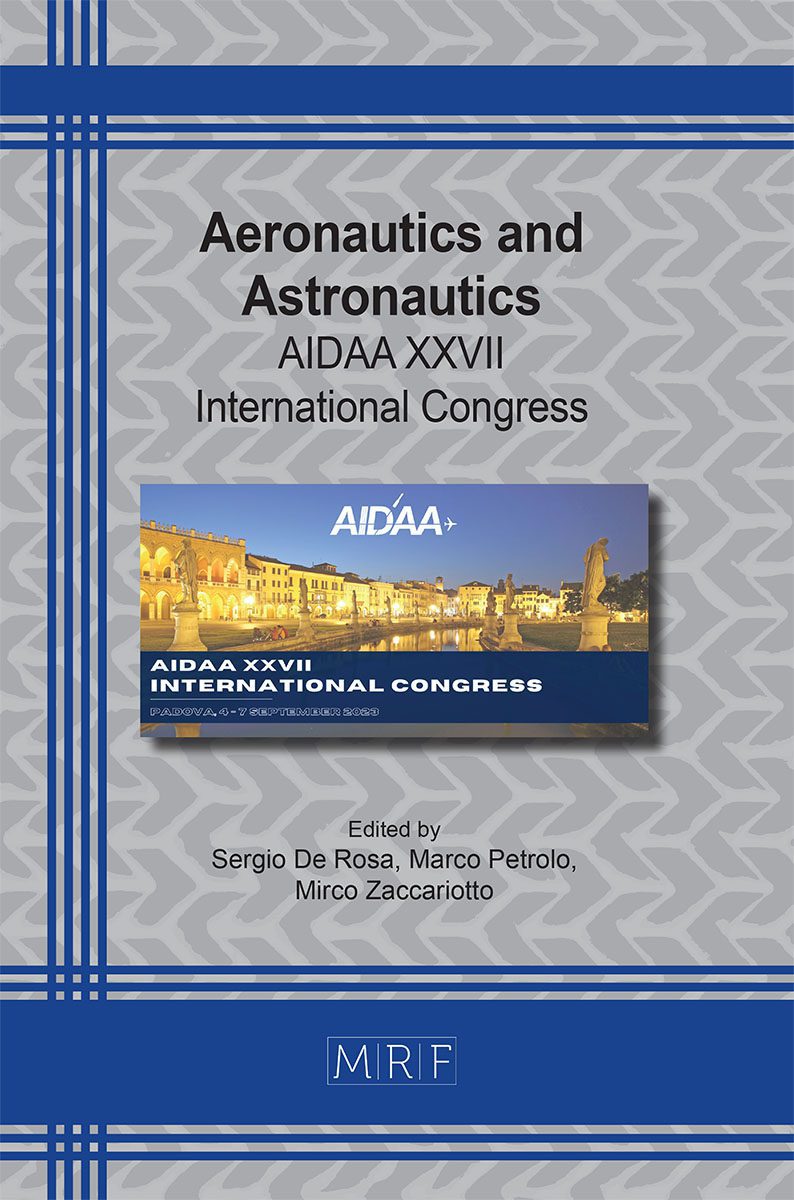Virtual element method for damage modelling of two-dimensional metallic lattice materials
Marco Lo Cascio, Ivano Benedetti, Alberto Milazzo
download PDFAbstract. Additively-manufactured metallic lattice materials are a class of architectured solids that is becoming increasingly popular due to their unique cellular structure, which can be engineered to meet specific design requirements. Understanding and modelling the damage in these innovative materials is a significant challenge that must be addressed for their effective use in aerospace applications. The Virtual Element Method (VEM) is a numerical technique recently introduced as a generalisation of the FEM capable of handling meshes comprising an assemblage of generic polytopes. This advantage in creating domain discretisation has already been used to model the behaviour of materials with complex microstructures. This work employs a numerical framework based on a nonlinear VEM formulation combined with a continuum damage model to study the fracture behaviour of two-dimensional metallic lattice material under static loading. VEM’s effectiveness in modelling lattice failure behaviour is assessed through several numerical tests. The influence of micro-architecture on the material’s failure behaviour and macroscopic mechanical performance is discussed.
Keywords
Virtual Element Method, Metallic Lattice Materials, Damage
Published online 11/1/2023, 4 pages
Copyright © 2023 by the author(s)
Published under license by Materials Research Forum LLC., Millersville PA, USA
Citation: Marco Lo Cascio, Ivano Benedetti, Alberto Milazzo, Virtual element method for damage modelling of two-dimensional metallic lattice materials, Materials Research Proceedings, Vol. 37, pp 386-389, 2023
DOI: https://doi.org/10.21741/9781644902813-85
The article was published as article 85 of the book Aeronautics and Astronautics
![]() Content from this work may be used under the terms of the Creative Commons Attribution 3.0 license. Any further distribution of this work must maintain attribution to the author(s) and the title of the work, journal citation and DOI.
Content from this work may be used under the terms of the Creative Commons Attribution 3.0 license. Any further distribution of this work must maintain attribution to the author(s) and the title of the work, journal citation and DOI.
References
[1] Beirão da Veiga, L., Brezzi, F., Cangiani, A., Manzini, G., Marini, L. D., Russo, A., Basic principles of virtual element methods, Mathematical Models and Methods in Applied Sciences 23(01) (2013) 199-214. https://doi.org/10.1142/S0218202512500492
[2] Wriggers, P., Reddy, B. D., Rust, W., & Hudobivnik, B., Efficient virtual element formulations for compressible and incompressible finite deformations, Computational Mechanics, 60 (2017) 253-268. https://doi.org/10.1007/s00466-017-1405-4
[3] M. Lo Cascio, Marco, A. Milazzo, I. Benedetti, Virtual element method for computational homogenization of composite and heterogeneous materials. Composite Structures 232 (2020) 111523. https://doi.org/10.1016/j.compstruct.2019.111523
[4] M. Lo Cascio, Marco, A. Milazzo, I. Benedetti, A hybrid virtual–boundary element formulation for heterogeneous materials, International Journal of Mechanical Sciences 199 (2021) 106404. https://doi.org/10.1016/j.ijmecsci.2021.106404
[5] M. Lo Cascio, I. Benedetti, Coupling BEM and VEM for the Analysis of Composite Materials with Damage, Journal of Multiscale Modelling 13.01 (2022) 2144001. https://doi.org/10.1142/S1756973721440017
[6] M. Lo Cascio, Marco, A. Milazzo, I. Benedetti, Virtual element method: Micro-mechanics applications. In Key Engineering Materials 827 (2020) 128-133, Trans Tech Publications Ltd. https://doi.org/10.4028/www.scientific.net/KEM.827.128
[7] L. Dong, V. Deshpande, H. Wadley, Mechanical response of Ti–6Al–4V octet-truss lattice structures, International Journal of Solids and Structures 60 (2015) 107-124.
[8] J. H. P. De Vree, W.A.M. Brekelmans, M.A.J. van Gils, Comparison of nonlocal approaches in continuum damage mechanics, Computers and Structures 55.4 (1995) 581-588.































